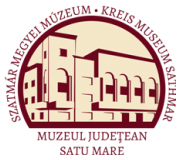Astaloş, Ciprian (szerk.): Satu Mare. Studii şi comunicări. Seria arheologie 28/1. (2012)
Bogdan Petru Niculică: Tre bronze sword of Costâna (Todireşti commune, Suceava county)
swords were discovered, as published by K. Zurowski and which show similitudes with the sword of Costâna37. Conclusions The sword of Costâna is rather difficult to classify precisely, due to the lack of the handle. Still, the morphological features presented above: ricasso, the shape of the guard, the shape of the blade and the sections hereof, the absence of rand along the rod of the handle (specific to the tongue-hilted swords), suggest the inclusion in one of the types Vollgriffschwert: Liptau or cup-hilted (Schalenknaufschwert), naturally with the error margin that we assume. Thus, we propose as dating the interval Ha A-Ha B. The sword was probably deposited in the meadow terrace of Suceava river; during the floods, the river waters drag further into the banks and determined the fracture hereof, involving also this object. For the Costâna area, geomorphological studies indicate the presence of low meadow terraces38; Suceava valley, including the 2-3 m terraces was also researched in spring 2012 (PI. 10)39. Naturally, along the millennia, Suceava river modified its course, which varied, periodically moving towards northeast and southeast. At a certain moment, as terraces indicate, Suceava River ran in the immediate neighborhood of Dealul Mare, including the confluence of Ilişeşti brook with Suceava River, existing at a certain distance upwards in comparison to the current location. If at the beginning of the Early Hallstatt, at the level of Subboreal/Subatlantic40, the riverbed of the Suceava was probably at an absolute altitude higher than the current position, it means that the meadow terraces visible nowadays represented the limit of the riverbed of those times. Such modifications of the course of Suceava river can also be followed in the last 100 years (PI. 10), on the basis of the analysis of the physic-geographical and topographical maps. The observations pertaining to the modification of the course of Suceava river are also valid in the case described above characterizing the discovery of Măneuţi41. In our view, if the deposition was done in the meadow terrace of Suceava river (of 2-3 m), we cannot speak of proper deposition in the aquatic environment (Flußfund), in the classic meaning of the word, that is direct deposition in a water (in the present case Suceava river). On the other hand, we point out the fact that the deposition took place near the water source: Suceava river; we should also add here that it may not be a coincidence the fact that both the sword of Costâna and the one of Măneuţi were found near confluences. The sword was deposited after a certain time interval, in which it was intensively used, as proved by the traces on the blade/edge and the asymmetric aspect of the edge. It is possible that we are in front of a deposition of a single item (Einzelstückdeponierung), that is a deposition belonging to a single functional category (clean deposition)42. We consider that the production, repairing and reusage of the item can be connected to the population of Grăniceşti cultural group of the Gáva-Holihrady culture, which developed in the northeastern Carpathian area. The sword of Costâna, together with the items of Măneuţi and those of Voloca may be items imported from the original production areas of the Gáva culture (Slovakia, northeast Hungary). But, at the same time, one should not neglect the hypothesis that in a certain phase of the historical development of the communities of the Grăniceşti type, bronze objects might have been locally produced in the northeast Carpathian area43. The bronze sword ofCostâna (Todireşti commune, Suceava county) 37 Zurowski 1949, pl. XXXII/6 - Piddnistriani, Zidacivs’kij district, reg. LViv; pl. XXXIII/2 - Kariv, Sokals’kij district, reg. L’viv; Pl. XXXIII/5 - Komarniki, Turkivs’kij district, reg. LViv. 38 Martiniuc/ Băcăuanu 1960, 377-378 39 Research undertaken by associate professor Dinu Oprea-Gancevici PhD („Ştefan cel Mare” University of Suceava, Faculty of Geography), whom we thank for the collaboration. 40 Donisă 1993, 242-246 41 Research by B. P. Niculică, 2011. 42 In this context mention can also be made of the bronze sword of Lăpuş (Maramureş County), recently published, which represents another deposition of a sole item: Kacsó 2009, 48 and notes 23-26, with the indication of a bibliography pertaining to this subject. For the characteristics of sword depositions between the Middle Danube and the Dniestr see: Bratu 2009,41-59. The author analyses inter alia the tongue hilted swords with three nervures on the disk and the antenna swords and the relation to the environment. See also: Hansen 2002, 91-97. 43 Ignat 1993, 377; Ignat 2000,19-23,95-96,108, 123. 241
